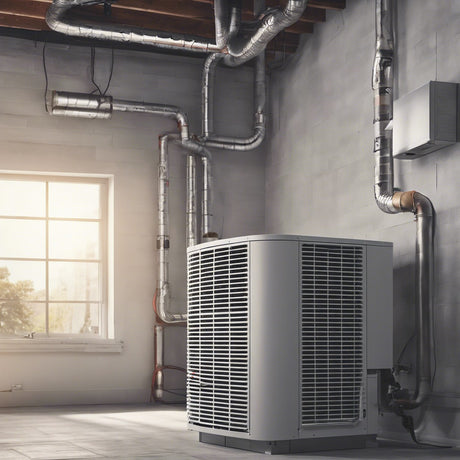- No products in the cart.
Beyond the Basics: Innovative HVAC Installation Techniques Explained
16
Feb
Introduction: When it comes to HVAC (Heating, Ventilation, and Air Conditioning) installation, there's more than meets the eye. While the basics of installing HVAC systems are crucial, innovative techniques are revolutionizing the industry, offering improved efficiency, sustainability, and comfort for residential and commercial spaces. In this article, we'll explore some of these innovative HVAC installation techniques that go beyond the fundamentals.
-
Geothermal Heat Pump Systems: Geothermal heat pump systems utilize the consistent temperature of the earth to provide heating, cooling, and hot water for buildings. By circulating fluid through underground pipes, these systems transfer heat between the building and the earth, offering highly efficient and environmentally friendly heating and cooling solutions.
-
Variable Refrigerant Flow (VRF) Systems: VRF systems use advanced refrigerant technology to provide precise control over temperature and airflow in different zones of a building. By adjusting refrigerant flow based on demand, VRF systems offer energy-efficient heating and cooling with customizable comfort settings for individual rooms or areas.
-
Ductless Mini-Split Systems: Ductless mini-split systems eliminate the need for traditional ductwork by using individual air handlers to deliver heating and cooling directly to specific zones or rooms. These systems offer flexibility in design and installation, improved energy efficiency, and enhanced indoor air quality compared to conventional HVAC systems.
-
High-Performance Insulation and Air Sealing: Proper insulation and air sealing are essential for maximizing the efficiency and performance of HVAC systems. Innovative insulation materials, such as spray foam and aerogel, offer superior thermal performance and moisture resistance, helping to create a tight building envelope and minimize heat loss or gain.
-
Smart Thermostat Integration: Smart thermostats enable remote control and automation of HVAC systems, allowing users to adjust temperature settings, monitor energy usage, and receive alerts or notifications from anywhere using a smartphone or tablet. Integrating smart thermostats with HVAC installations enhances comfort, convenience, and energy savings for building occupants.
-
Energy Recovery Ventilation (ERV) Systems: ERV systems recover heat or energy from outgoing air and transfer it to incoming fresh air, improving indoor air quality while reducing heating and cooling costs. By exchanging heat and moisture between exhaust air and supply air streams, ERV systems help maintain balanced ventilation and humidity levels in buildings.
-
Advanced Load Calculation and Design Software: Advanced load calculation and design software tools enable HVAC professionals to accurately size equipment, optimize system layouts, and predict thermal performance based on building specifications and climate data. These tools facilitate informed decision-making, improve system efficiency, and reduce installation errors.
Conclusion: Innovative HVAC installation techniques are transforming the way heating, ventilation, and air conditioning systems are designed, installed, and operated. By embracing technologies such as geothermal heat pumps, VRF systems, ductless mini-splits, and smart thermostats, building owners and HVAC professionals can achieve superior comfort, energy efficiency, and sustainability in residential and commercial spaces. As the industry continues to evolve, staying informed about these innovative techniques is essential for staying ahead of the curve and delivering optimal HVAC solutions for modern buildings.













